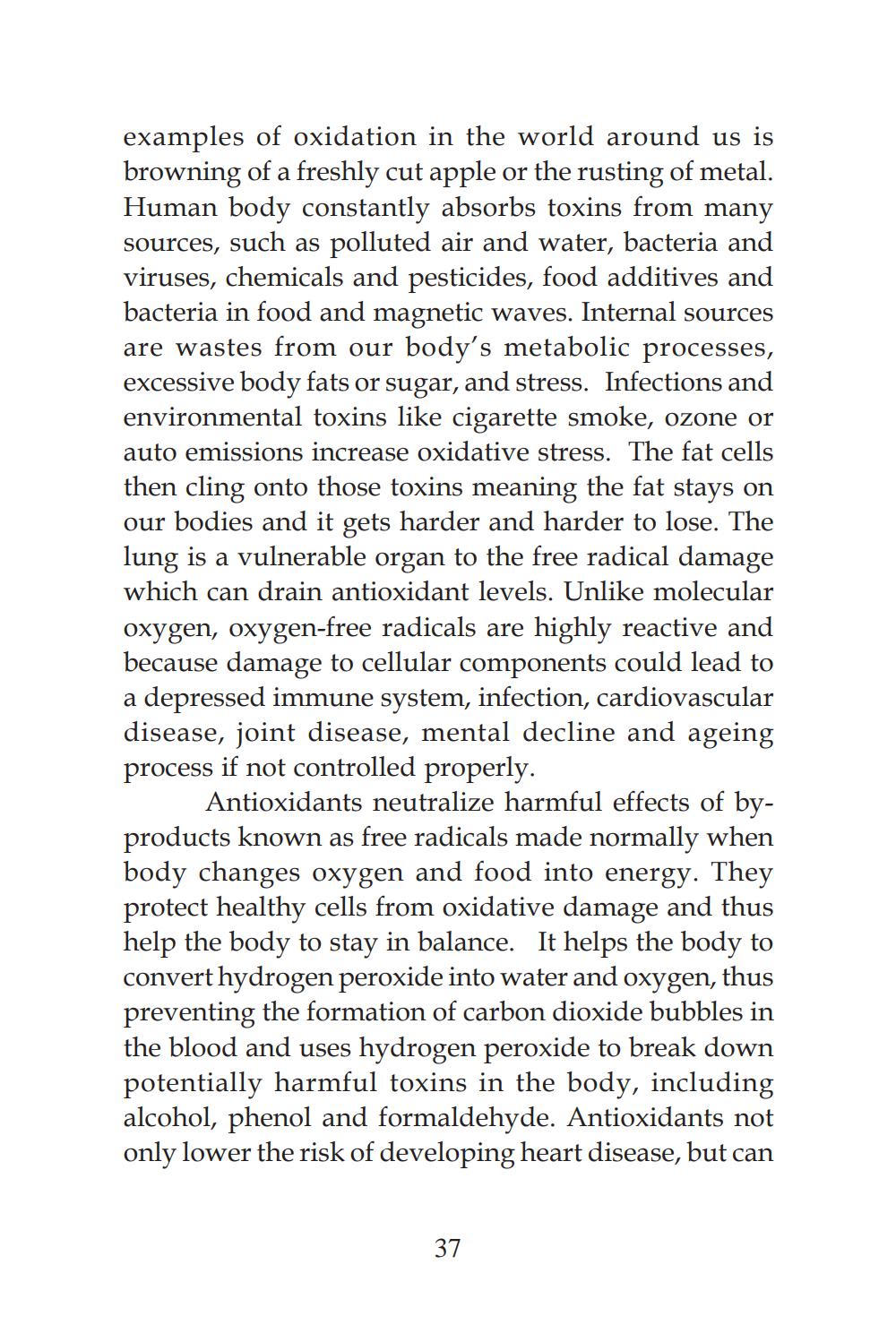________________
examples of oxidation in the world around us is browning of a freshly cut apple or the rusting of metal. Human body constantly absorbs toxins from many sources, such as polluted air and water, bacteria and viruses, chemicals and pesticides, food additives and bacteria in food and magnetic waves. Internal sources are wastes from our body's metabolic processes, excessive body fats or sugar, and stress. Infections and environmental toxins like cigarette smoke, ozone or auto emissions increase oxidative stress. The fat cells then cling onto those toxins meaning the fat stays on our bodies and it gets harder and harder to lose. The lung is a vulnerable organ to the free radical damage which can drain antioxidant levels. Unlike molecular oxygen, oxygen-free radicals are highly reactive and because damage to cellular components could lead to a depressed immune system, infection, cardiovascular disease, joint disease, mental decline and ageing process if not controlled properly.
Antioxidants neutralize harmful effects of byproducts known as free radicals made normally when body changes oxygen and food into energy. They protect healthy cells from oxidative damage and thus help the body to stay in balance. It helps the body to convert hydrogen peroxide into water and oxygen, thus preventing the formation of carbon dioxide bubbles in the blood and uses hydrogen peroxide to break down potentially harmful toxins in the body, including alcohol, phenol and formaldehyde. Antioxidants not only lower the risk of developing heart disease, but can
37




